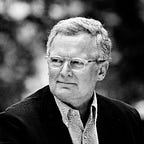Advanced Work
The world of work still consists of cultural metaphors that have guided the development of industrial firms and societies for the past 100 years. These habitual mindsets act as intellectual and emotional standards for determining what is the right way to think and what are the right things to o.
The characteristics of creative work utilizing technological intelligence in the network economy are different from what we are used to: the industrial production of physical goods was financial capital-intensive, leading to centralized management and manufacturing facilities. The industrial era also created the shareholder capitalism we now experience.
The architecture of work is metaphorically still a picture of walls defining who is employed and inside and who is unemployed and outside. Who is included and who is excluded. Who “we” are and who “they” are. This way of thinking was acceptable in repetitive work where it was relatively easy to define what needed to be done and by whom as a definition of the quantity of labor and quality of capabilities.
In creative, knowledge-based work it is increasingly difficult to know the best mix of people, capabilities and tasks in advance. Interdependence between peers involves, almost by default, crossing boundaries. The walls seem to be in the wrong position or in the way, making work harder to do. What, then, is the use of the organizational theater when it is literally impossible to define the organization before we actually do something?
What if the organization really should be an ongoing process of emergent self-organizing? Instead of thinking about the organization, let’s think about continuous organizing. If we take this view we don’t think about walls but we think about what we do and how groups are formed around what is actually going on, or what should be going on. The new management task is to make possible the very easy and very fast emergent formation of groups and to make it as easy as possible for the best contributions from the whole network to find the applicable tasks.
The focal point in tomorrow’s organizing is not the organizational entity one belongs to, or the manager one reports to, but the reason that brings people together. What purposes, activities and tasks unite us? What is the reason for the formation of groups? The architecture of work is a live social graph of networked interdependence and accountability.
New interaction technologies give individuals and organizations the ability to do this, to reconfigure agency and its form in any way they desire and can imagine. We are not confined to any one structure any more. Sometimes people stay together for a long time, sometimes for a very, very short time. The Internet is no longer about linked pages but connected purposes. We want to do something — with the help of other people and with the help of technological intelligence.
The task is to combine technological intelligence and creative interaction between interdependent human beings.
What could it look like? In 1996, the chess grandmaster and then world champion Garry Kasparov, was defeated by a computer for the first time. The same thing happened again in a rematch in 1997. The new champion was the famous Deep Blue from IBM. After these world-changing events and after many subsequent matches against computers, Kasparov had the idea of re-writing the rules of the game. He came up with a new form of chess in which humans would be allowed to use computers when playing, also against computers. This form of chess was named “Advanced Chess”. The key insight for us is that today the best chess player is not a computer or an individual assisted by a computer, but a team of people making moves and decisions in creative cooperation with one another and in cooperation with computers, in cooperation with technological intelligence.
The really big idea is to reconfigure agency in a way that brings these relationships into the center. The task is to see action within complex human relationships supported by our relationship with algorithmic technological intelligence.
It is now time for “Advanced work”!
